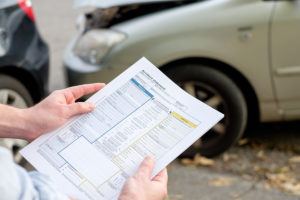Rear-end collisions often occur seemingly out of nowhere. Your car sat securely at a red light or stop sign for one minute. The next moment, another vehicle slams into the back of yours without warning. In other cases, your vehicle may have remained in motion, but the driver behind you slammed into you due to a lack of care or excessive speed
What comes next? You may have many questions related to your rear-end collision, especially if you suffered severe injuries due to the other driver’s negligent actions then contact car accident attorney in Bronx for help.
What Injuries Occur Most Often in Rear-End Collisions?
Rear-end collisions can cause a variety of severe injuries. The severity of those injuries may depend heavily on the force of the accident, including the size of the vehicle that struck you, whether your vehicle was in motion at the time of the accident, and factors like the protection offered by your own car.
Back and Neck Injuries
Frequently, rear-end collisions result in severe back and neck injuries. A rear-end collision usually involves a great deal of force that rapidly snaps the body back and forth during the accident. As a result, many people suffer serious back pain after a collision.
Back and neck injuries may include:
- Whiplash can cause severe pain and decreased mobility for the duration of the victim’s recovery. Often, patients involved in a severe rear-end collision suffer from chronic whiplash, which may cause extreme, ongoing pain.
- Herniated discs may cause pain, numbness, or weakness along the back and spine.
- Muscle sprains and strains can cause ongoing pain and significant weakness. Without physical therapy, patients with muscle sprains and strains may have a hard time making a full recovery and may experience longer-term weakness.
In extreme cases, a rear-end collision can result in spinal cord injuries. A spinal cord injury may result in full or partial paralysis below the site of the injury. It may lead to many ongoing complications for the victim, including decreased organ function below the location of the injury.
Broken Bones
Rear-end collisions frequently result in broken bones due to the force of the accident. People in the driver’s seat may have broken bones in their arms and hands from bracing themselves against the steering wheel. However, broken bones can occur anywhere in the body.
Head Injuries
The abrupt back-and-forth movement associated with a rear-end collision can cause the brain to strike the inside of the skull, resulting in significant trauma and swelling. Victims in the vehicle may also hit their heads on the dashboard or the car seat, which can add further trauma. Head injuries can cause immense complications for many victims, including problems with cognitive processing, focus, and concentration.
Who Bears Liability for a Rear-End Collision?

Most often, the rear driver bears liability for a rear-end collision.
Rear-end collisions can occur for several reasons.
- The rear driver grew distracted and did not notice the front vehicle slowing or stopping.
- The rear driver chose to speed, which did not allow adequate time to come to a complete stop.
- The rear driver followed too close to the driver in front.
- The rear driver engaged in road rage and deliberately caused a collision.
In some cases, other factors can contribute to a rear-end collision, leaving someone else liable.
The Front Driver
In rare cases, the front driver may bear liability for a rear-end collision.
The front driver may bear liability for:
- Putting the car into reverse instead of drive and striking the rear vehicle.
- Allowing the car to roll backward on a steep hill, striking the rear vehicle.
- Failing to replace brake lights that might have warned the rear driver of an impending stop.
- Deliberately slamming on the brakes to cause a collision.
Establishing that the front driver bears liability for a rear-end collision can prove challenging. A lawyer can help navigate the claim process and provide essential information, including how to collect evidence that establishes the front driver’s liability.
The Vehicle Manufacturer
A rear-end collision can occur due to damage to the brakes that prevents the rear vehicle from stopping in time to avoid a collision. When a rear-end collision occurs due to faulty brakes, the manufacturer of those brakes and their components may bear liability for the damage. The manufacturer may bear liability when the vehicle manufacturer knows about damaged brakes but installs them on those vehicles anyway.
Determining who bears liability for a rear-end collision, including whether, in some cases, multiple parties may share liability for the accident, can make it easier to pursue the compensation you deserve for any injuries sustained in the accident.
After a Rear-End Collision: What to Do Next
When you suffer serious injuries in a rear-end collision, you can take steps to help protect your right to compensation.
While no one can guarantee the compensation you might recover for rear-end collision injuries, you can take steps to file a claim and protect your rights.
1. Review the police report for accuracy.
As soon after the accident as possible, get a copy of the police report and review it for accuracy. Make sure that the police report includes the right time and date of the accident as well as any other essential details, like the drivers involved in the accident. If you notice any incorrect information, contact the police department to review that information and have the report corrected.
2. Follow your medical care provider’s instructions.
Your medical care provider may offer much information about how to further your chances of recovering fully after a rear-end collision. Your care provider has your best interests at heart and wants to help you avoid further damages as well as increase your ability to recover completely from the accident.
Follow their instructions carefully.
This may mean:
- Attending appointments as scheduled, rather than putting them off for a later time or skipping appointments.
- Scheduling needed medical procedures on time.
- Participating actively in physical therapy, including completing all exercises given.
- Avoid activities that could worsen your injuries or cause worse injuries due to your condition and current needs.
If you fail to follow the instructions your medical care provider issues, it could prevent you from making the full recovery you need. In addition, if you limit your recovery by your actions, it could limit the compensation you can recover.
3. Contact an attorney to discuss your rear-end collision and any compensation you may deserve.
Filing an injury claim after a rear-end collision offers your best chance to recover the full compensation you deserve for your injuries. When you file a claim on your own, however, you may find yourself dealing with an insurance company that minimizes the compensation it pays you.
A lawyer can help guide you through the claim process and offer valuable insight into how to manage your claim. By working with a lawyer, you can get help collecting evidence that can establish liability for your rear-end collision. A lawyer can support you as you deal with the insurance company and help you fight for the compensation you’re entitled to, whether you settle your claim out of court or in court.
4. Document your recovery and difficulties, including all medical bills and any challenges you may face on your road to recovery
Clear documentation can make it much easier to identify your losses after an accident. An attorney can help you lay out your medical bills following a rear-end collision to calculate the compensation you deserve.
Will the Insurance Company That Covered the Party Liable for My Rear-End Collision Cover All My Medical Bills?
A personal injury claim against a driver does not automatically mean that the insurance company will cover the full extent of your medical bills. The other driver’s insurance company will not provide direct coverage for your medical bills. You will need to make your own arrangements to take care of the costs associated with medical treatment.
That starts, in both New York and New Jersey, by using your personal injury protection coverage. PIP insurance provides immediate coverage for any medical bills associated with a car accident, regardless of who caused the accident. Your PIP coverage may depend on your specific policy limits, including the range you chose when you set up your policy.
Next, your coverage may depend on the coverage offered by the policy that covers the liable party. In many cases, drivers will carry only minimum liability insurance, which may limit the compensation you can recover for injuries from your rear-end collision.
A lawyer can help review the limits on the policy that covers the liable driver and give you a better idea of the compensation you can recover based on those terms. Furthermore, a lawyer can help ensure you get all the essential compensation you deserve, including any additional riders or exceptions on the policy that could help you maximize compensation for the rear-end collision.
Will the Insurance Company That Covers the Rear Driver Fight the Claim?
In a rear-end collision claim, the liable party generally seems obvious. You likely know that the other driver struck you from behind, so you may assume that you will have no trouble getting compensation from the insurance company. Unfortunately, that does not mean the insurance company will make things easy. You may find yourself dealing with a number of challenges throughout the claim process in asserting the compensation you deserve.
The insurance company may try to show that you caused or contributed to the accident.
In the case of a collision that occurred on the road, while you wereo stopped at a red light or stop sign, for example, the insurance company may try to show that you deliberately slammed on your brakes to cause an accident or that you had damaged tail lights that made it impossible for the other driver to see your intent to stop.
The insurance company may deny the full extent of your injuries and the compensation you need for your medical costs.
When you suffer severe injuries in a rear-end collision, you may have considerable medical costs associated with those injuries. The insurance company, however, may refuse to acknowledge the full extent of your injuries.
The insurance company may claim:
- That you suffered injuries at a time other than the accident and simply want to use the accident as an excuse to get compensation for those injuries
- That you did not really need the medical treatment that you claimed as part of your rear-end collision claim
- That you did not really suffer the injuries and limitations you claim
The insurance company may make it difficult for you to collect full compensation for your injuries.
The insurance company may delay processing your claim.
When you have severe injuries from a rear-end collision, you need compensation for those injuries in your hands quickly. Unfortunately, the insurance company may make it difficult for you to get those funds. It can be challenging to get the insurance company to answer your calls or to process your claim efficiently.

Serious Injuries Lawyer, Andrew Finkelstein
By working with a lawyer, you can more clearly establish your claim and your right to compensation while pursuing the full compensation you deserve.
Speak With a Lawyer Today
Rear end accidents may sound minor, but they cause major harm every day. The severe, even life-threatening injuries caused by a rear end crash can inflict lasting physical, emotional, and financial pain on victims and their families.
Victims can hold the party responsible for causing that pain accountable by calling on the services of an experienced motor vehicle accident injury attorney. If you find yourself the victim of a rear end collision, contact an experienced car accident attorney today for a free consultation.
